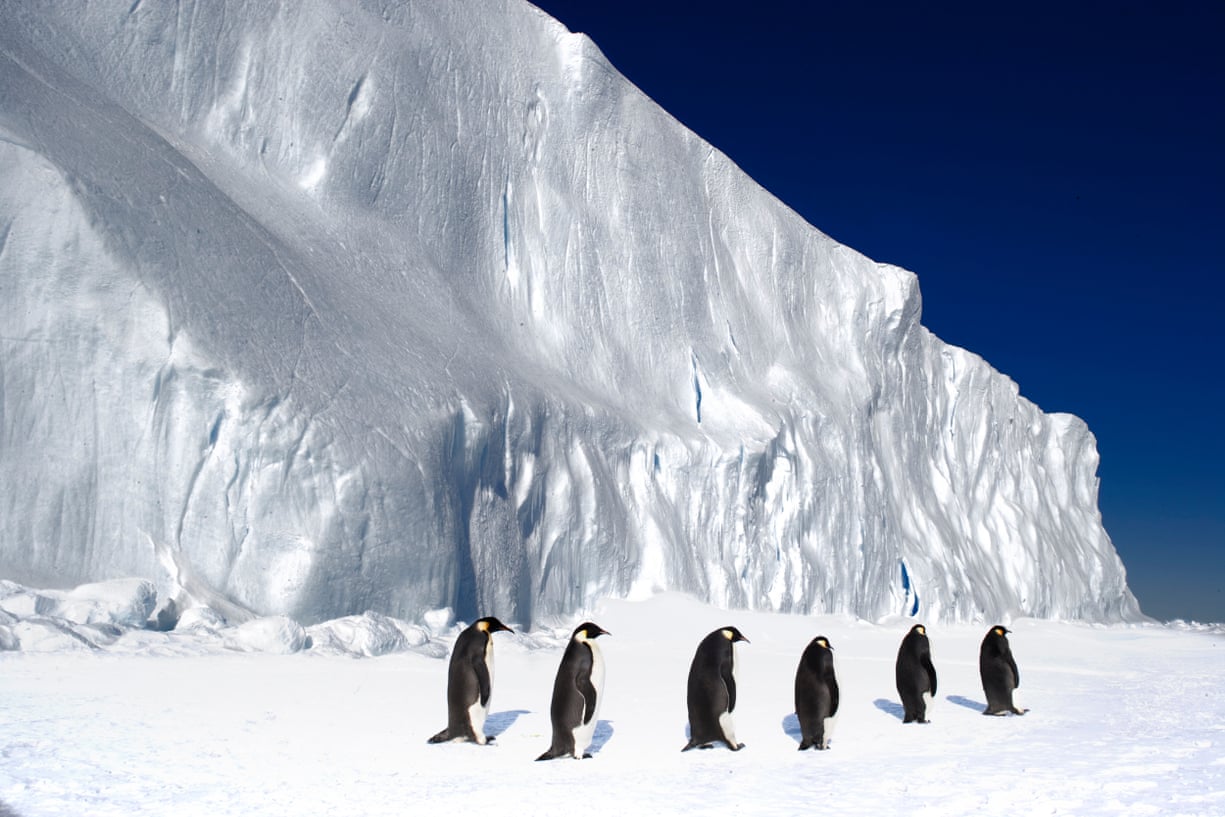This article originally appeared in The Guardian on 8 July 2017.

Photograph: John Weller/Antarctic Ocean Alliance
Shortly before World Ocean Day, and a special UN meeting to address threats facing oceans, the US president, Donald Trump, announced that the country was walking away from the Paris agreement. Here in Australia, there was a welcome bipartisan commitment to stay the course, with Malcolm Turnbull defending Australia’s participation in this critically important environmental pact.
But Australia’s environmental diplomacy needs to be more than just defensive. Taking a cue from French president Emmanuel Macron’s pledge to “make the planet great again” by determined leadership on climate action, Australia should likewise move on to the front foot. And one place where it can make a big contribution is in its own backyard – Antarctica and the Southern Ocean.
The Antarctic and its surrounding seas are experiencing profound physical and ecological pressure as a result of climate change and ocean acidification. Just last week, scientists reported on a big melting event on the surface of the Ross ice shelf during 2016, across an area of about 800,000 sq km, which is larger than Texas.
Antarctica’s ice shelves are also melting from below and are beginning to fracture and disintegrate. The Larsen C ice shelf, a major extension of the West Antarctic ice sheet, is the latest to show alarming signs of collapse, with a big rift rapidly “unzipping” a large portion of the shelf from the ice front. The calving of the shelf is only a matter of time.
The states that manage Antarctica and the Southern Ocean have powerful tools at their fingertips to give ecosystems the best possible chance of adapting to the physical changes under way in Antarctica, while governments globally come to grips with the climate crisis.
These tools include Marine Protected Areas, in which fishing is banned or limited to protect ecosystems and species. The science is clear that marine reserves can mitigate climate change and help ecosystems adapt to changes in water temperature, chemistry and circulation. MPAs help build ecosystem resilience, provide refuge for marine species and can also protect carbon pools, or sinks (“blue carbon”).
In 2016, a deadlock of more than five years was broken when the Ross Sea MPA, the largest marine reserve in the world, was established by the Commission for the Conservation of Antarctic Marine Living Resources. CCAMLR is the international body established under the Antarctic treaty system with the specific mandate of protecting the Southern Ocean ecosystem.
Australia rightly enjoys a reputation as a global leader in the protection of the Antarctic environment. But our country needs to step up its diplomacy, particularly if it wishes to achieve the designation of the east Antarctic representative system of marine protected areas, a joint initiative of Australia, France and the EU.
The proposal was developed in 2010 on the basis of extensive scientific research. But since then, it has not gained consensus support within CCAMLR. Successive revisions have been made to the proposal to make it more acceptable to the CCAMLR parties.
The east Antarctic MPA is already smaller than initially proposed, comprising three areas instead of seven. Also still up for discussion is how strong the protections will be within the MPA.
There is a risk that the proponents will water down the proposal and accept a compromise in the face of potential Chinese and Russian opposition. The east Antarctic MPA is therefore still in flux – France and the EU have drafted a revised proposal that has been shared with the Australian government. The ball is now in Australia’s court on how best to proceed.
The experience with the Ross Sea MPA shows that high-level political engagement is vital to make breakthroughs in Antarctic protection. The Ross Sea MPA was achieved in large part because of the direct interventions of the then US secretary of state John Kerry and president Barack Obama to persuade Russia and China to support the proposal.
If the east Antarctic MPA is to be much more than just a “paper park” – an MPA in name only – it is vital that the Australian government identify it as a top diplomatic priority. Strong protections need to be retained in the MPA, including strict no-take areas where fishing is prohibited, which will protect the coastal and ocean ecosystems, including foraging areas for Adélie and emperor penguins.
There is limited time for bilateral negotiations before the next CCAMLR meeting in Hobart in October, and the success of the MPA will hinge on whether Australia can join France and the EU in advocating for areas that will be firmly off limits for the commercial fishing industry.
If Australia is successful, it would mark a big achievement in Southern Ocean protection. But success is far from assured, and without a strong diplomatic effort at the highest levels, we could be saddled with a second-best outcome and one that would fail to serve the interests of effective Antarctic protection in an era of rapid environmental change.
• Saturday 8 July marks 100 days until the CCALMR meeting. Tim Stephens is a professor of international law and an ARC future fellow at the University of Sydney’s law school. He attended the Antarctic treaty consultative meeting in Beijing as an academic observer with the Australian government delegation.
